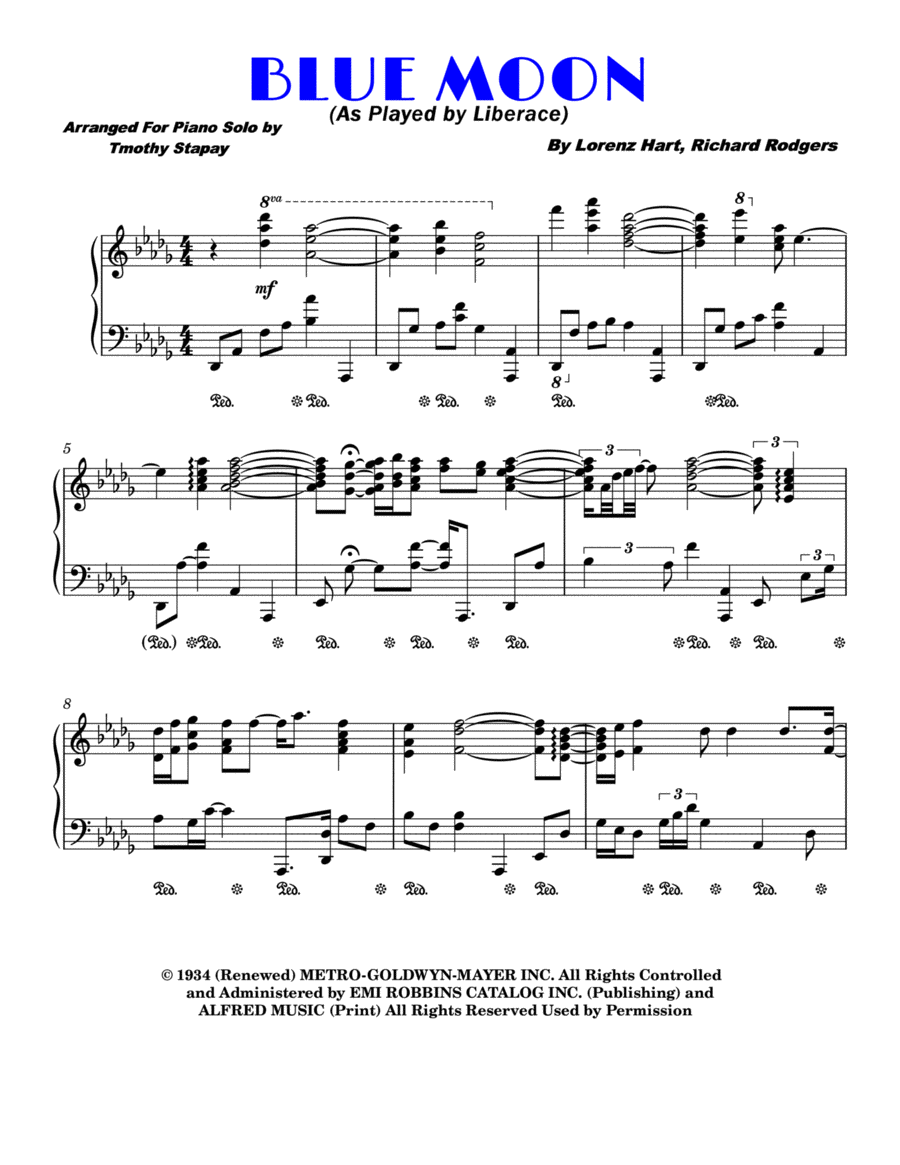Piano Solo - Level 5 - Digital Download SKU: A0.1198287 By Elvis Presley. By Lorenz Hart and Richard Rodgers. Arranged by Timothy Stapay/Liberace. Broadway,Film/TV,Jazz,Musical/Show,Singer/Songwriter,Standards. Score. 6 pages. Timothy Stapay #797475. Published by Timothy Stapay (A0.1198287). Blue Moon is arranged as played by famous piano artist, Liberace. This piano solo arrangement has all of the runs and ornamentations; just as performed by this legendary pianist.Blue Moon is a popular song written by Richard Rodgers and Lorenz Hart in 1934 that has become a standard ballad. Blue Moon became an international number-one hit for the doo-wop group the Marcels, on the Billboard 100 chart and in the UK Singles Chart, and later that same year, an instrumental version by the Ventures charted at No. 54. Over the years, Blue Moon has been covered by many artists, including versions by Frank Sinatra, Jo Stafford, Ella Fitzgerald, Elvis Presley, Bobby Vinton, Sam Cooke, the Platters, Liberace, Dean Martin, Yvonne De Carlo, the Supremes, Cyndi Lauper, New Edition, Bob Dylan, Chromatics, and Rod Stewart. See Lyrics below:Blue moon, you saw me standin' aloneWithout a dream in my heart, without a love of my ownBlue moon, you knew just what I was there forYou heard me sayin' a prayer forSomeone I really could care forAnd then there suddenly appeared before meThe only one my arms will holdI heard somebody whisper please adore meAnd when I looked, the moon had turned to goldBlue moon, now I'm no longer aloneWithout a dream in my heartWithout a love of my ownAnd then there suddenly appeared before meThe only one my arms will ever holdI heard somebody whisper please adore meAnd when I looked, the moon had turned to goldBlue moon, now I'm no longer aloneWithout a dream in my heartWithout a love of my ownBlue moon, now I'm no longer aloneWithout a dream in my heartWithout a love of my ownWÅadziu Valentino Liberace(May 16, 1919 â February 4, 1987) was an American pianist, singer, and actor. A child prodigy born in Wisconsin to parents of Italian and Polish origin, he enjoyed a career spanning four decades of concerts, recordings, television, motion pictures, and endorsements. At the height of his fame from the 1950s to 1970s, he was the highest-paid entertainer in the world!
